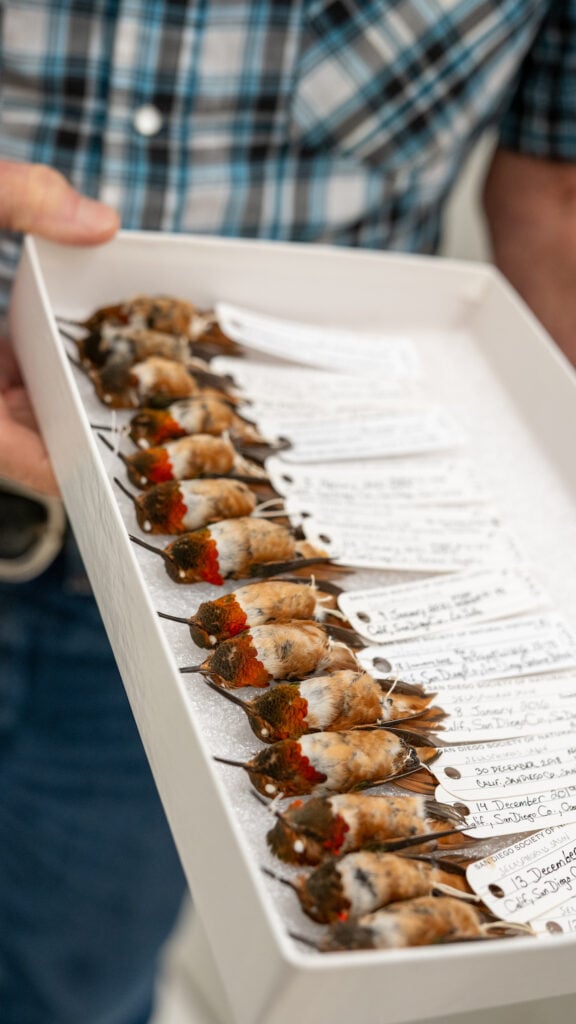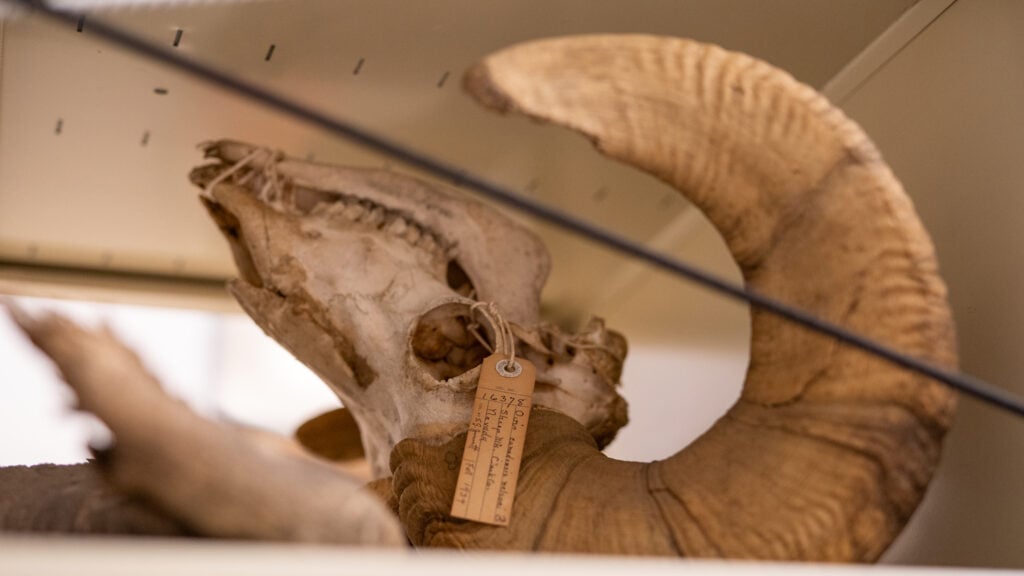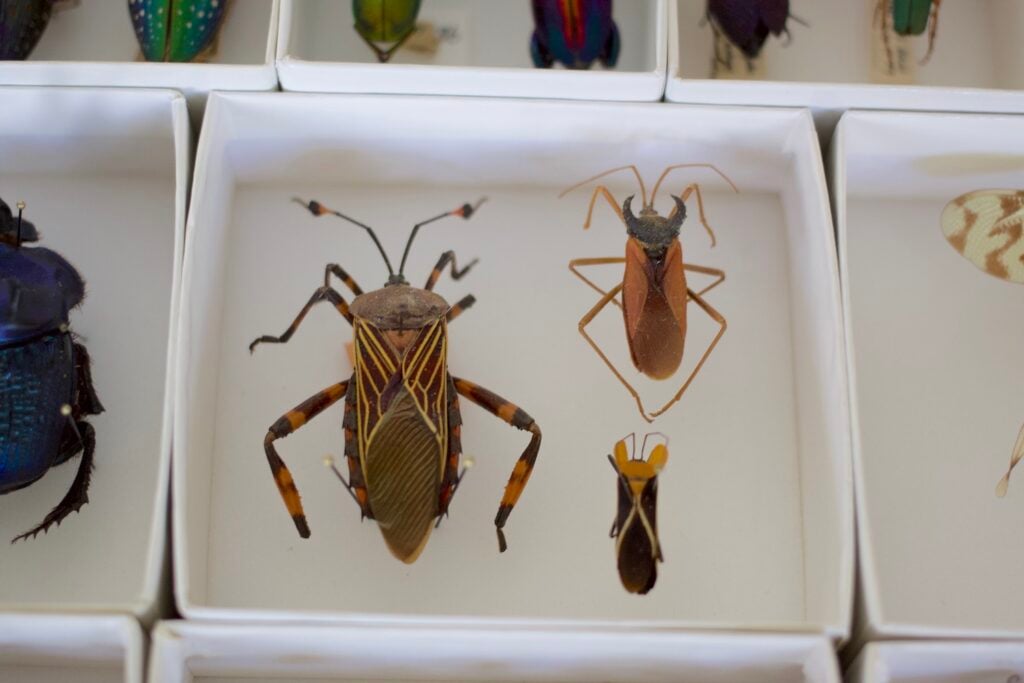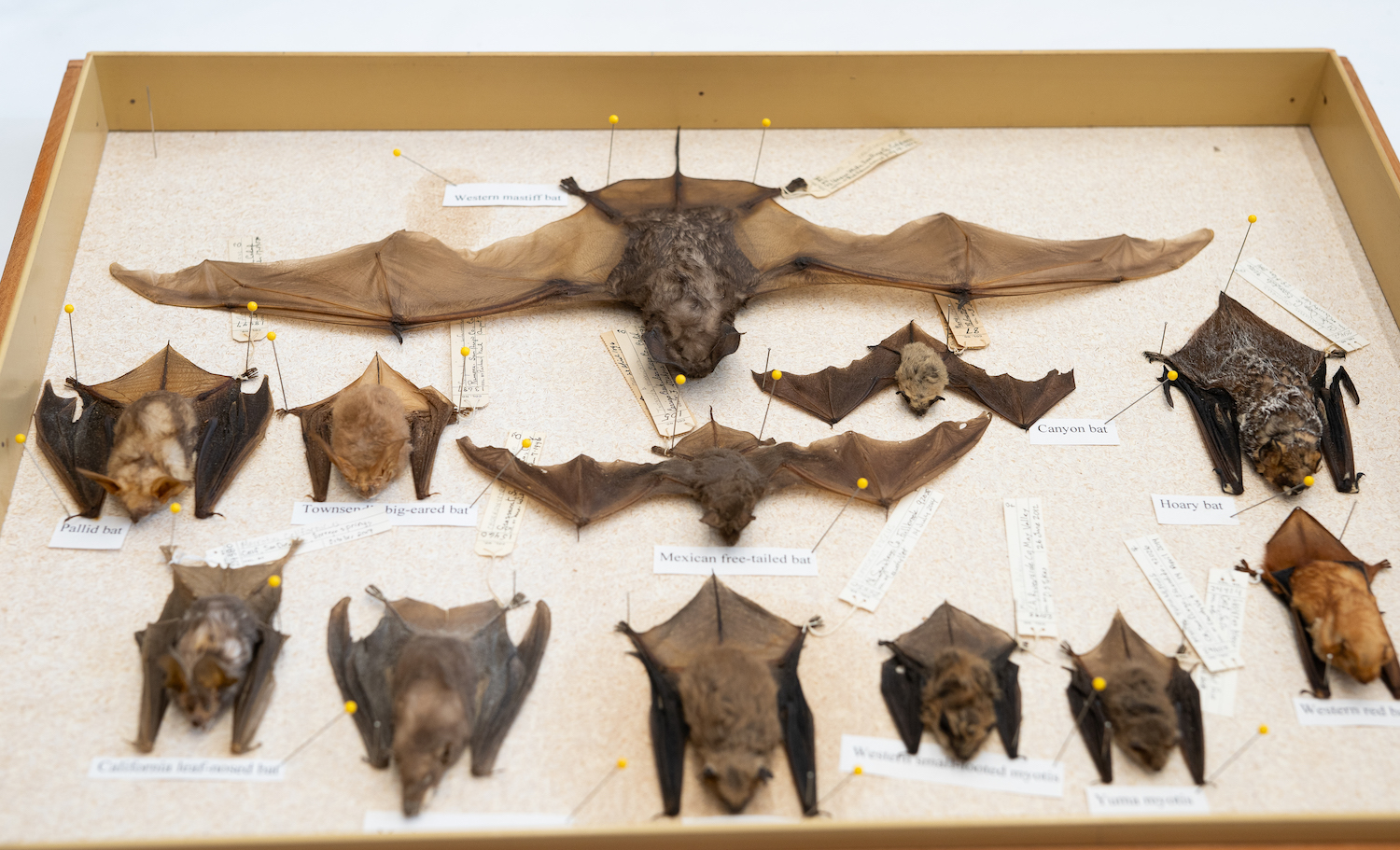Watch your step. You might bump into a skeleton back here.
See, museums are really just beautiful storage facilities. Whether you’re looking at a Dalí or a dinosaur fossil, behind every exhibition are temperature-controlled, humidity-monitored, dimly lit warehouses of carefully boxed and cataloged treasures. At art museums, they’re paintings and sculptures. At the San Diego Natural History Museum, the doors beyond the exhibits lead to impressive archives full of deceased critters.
These creatures may be dead, but their remains—now preserved, stuffed, and numbered as specimen—carry valuable information. Their role as study subjects keeps them alive in a sense. Like zombies, minus the hunger for flesh.

Their skin, bones, fur, and feathers—even the contents of their stomachs (see our story on the Natural History Museum’s massive rattlesnake collection)—tell tales about the lives they lived and the challenges they faced. These stories can help researchers better understand how rapidly certain ecosystems are changing and develop strategies to support native species. If environmental policy is based on science, these critters are data points, so properly storing them is everything.
And this storage is a sight to see.
Imagine a college library—big arched windows, light pouring in—but, instead of books, rows of shelves hold bighorn sheep skulls nestled against each other like rowers crouched in a shell boat. In endless drawers, rows of iridescent, red-throated, thumb-sized Allen’s hummingbirds; snow-white, cotton-stuffed albatrosses with foot-long beaks; trays of tiny voles; skunks as flat and large as manhole covers; and countless other species lie in rest together, some of their skulls removed and carefully cataloged next to the bodies, preserved for eternity. Down a hallway sit two massive tuna skeletons.

In the big room where birds and mammals are stored, white stacks of crank-apart shelving units house even more species. Wildlife biologist Drew Stokes spins the triangle-shaped handle, separating the shelves to show me drawers full of bats—mini bottle cap–sized bats, and bigger eclair-sized ones, too.
“We have both the smallest and largest bats in the US here in San Diego,” Stokes tells me. He sports a large, black bat tattoo on his arm. (“My stamp of dedication,” he says.)
Of the roughly 45 different bat species in the US, nearly half can be found in SD county. Twenty-two of California’s 27 species of bats reside here. San Diego is bat country. Big time.
For the last 16 years, Stokes has been working as a field biologist at the San Diego Natural History Museum, helping collect data on bats using sonar-detecting wildlife audio recorders and other high-tech gear, like butterfly nets.
“Sometimes the bats are huddled in a cluster, and, with one swoop, you can net 20 bats,” he tells me.
Once he has them, Stokes gathers as much data as he can. He tests the animals for a specific bat-killing fungus that’s going around and swabs them where food goes in and comes out to check for disease. Then he releases them back into the night. (He and his fellow scientists never kill the animals they study—many of the Nat’s preserved bats died naturally and were donated.)
“It’s just the coolest thing to catch them and hold them, even after all these years,” Stokes says. “Bats are so elusive and mysterious, almost mythical creatures. They’re operating on a realm beyond our senses.”
Meanwhile, over in the entomology department, there are enough bugs to film a horror movie franchise. “We have over 1.2 million insect and arachnid specimens dating back to the 1870s,” Pamela Horsley tells me. As the entomology collections manager, it’s her job to oversee these millions of spiders, scorpions, beetles, wasps, millipedes, roaches, and… well, you get the idea.
When I ask why we need so many lifeless creatures packed in a room, she patiently explains.
“Every one of the 1.2 million specimens has a label that tells you everything about it,” she says. “Where it was collected, what plant it was collected from— the who, what, where, when. Collections allow us to answer questions like, ‘Why was this species here and now it’s not?’ You get a really good understanding of how the ecosystem can be functioning.”
You also get glimpses of how brutal nature can be.
PARTNER CONTENT

“There are all these science fiction–esque stories in the insect realm,” Horsley says. “Like parasites preying on other parasites.” (See our story on the San Diego Spider Society to learn about the horrors of tarantula wasps.) “You know in the movie Alien when the alien pops out of [someone’s chest]? That’s what happens all the time.”
So it’s not just skeletons you might run into back here. Zombies and aliens also call these back rooms home. Won’t find that in an art museum.


















